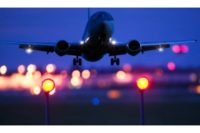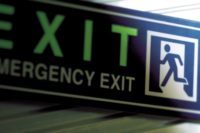Spate of laser incidents in NJ highlights danger to airplanes

Last week’s reports of lasers being pointed at 34 commercial jets as they flew over New Jersey were noteworthy for the sheer number of incidents involved, but unfortunately, are part of a trend that has become all too common. The Federal Aviation Administration (FAA) says last year, it logged 3,894 incidents of lasers pointed at airplanes, all over the country.
(Click to watch an FBI video, Making a Point About Lasers.)
Approximately half of the recent New Jersey incidents reported to the FAA by pilots occurred near Newark Liberty International Airport. The others were scattered throughout the rest of the state, which makes it unlikely that a single culprit was responsible.
American Airlines, JetBlue, United, Delta and Republic all had planes targeted by the lasers.
Why it's so dangerous
The light from a laser can travel more than a mile and expands into a blinding, vivid burst of illumination when seen through the plexiglass window of a cockpit. The effect can temporarily blind pilots and is especially dangerous when it happens as planes are closest to the ground, preparing to land or just after takeoff. Pilots have also suffered retinal damage and have been forced to miss work while they recover – something which wreaks havoc on airline schedules and can cause flight delays.
To date, there have been no apparent accidents caused lasers, but aviation safety experts fear that a tragedy is inevitable.
Harsh penalties
Pointing a laser at a plane is a federal crime, punishable by up to five years in prison and $1,000 in fines. The FBI has a standing offer of up to $10,000 for information leading to the arrest of someone who deliberately points a laser at an aircraft.
In March of last year, 26-year-old Sergio Rodriguez of Clovis, California and his girlfriend, 23-year-old Jennifer Coleman, aimed a green laser that was 13 times more powerful than legally allowed at an emergency transport helicopter for Children’s Hospital of Central California, then into the cockpit of a Fresno police helicopter.
Coleman was sentenced to two years in prison. Rodriguez, who had a lengthy criminal record, was sentenced to 14 years in prison after being convicted of attempted interference with persons engaged in the operation of an aircraft. Rodriguez's sentence is believed to be the longest sentence in U.S. history for a laser-strike case.
Looking for a reprint of this article?
From high-res PDFs to custom plaques, order your copy today!





